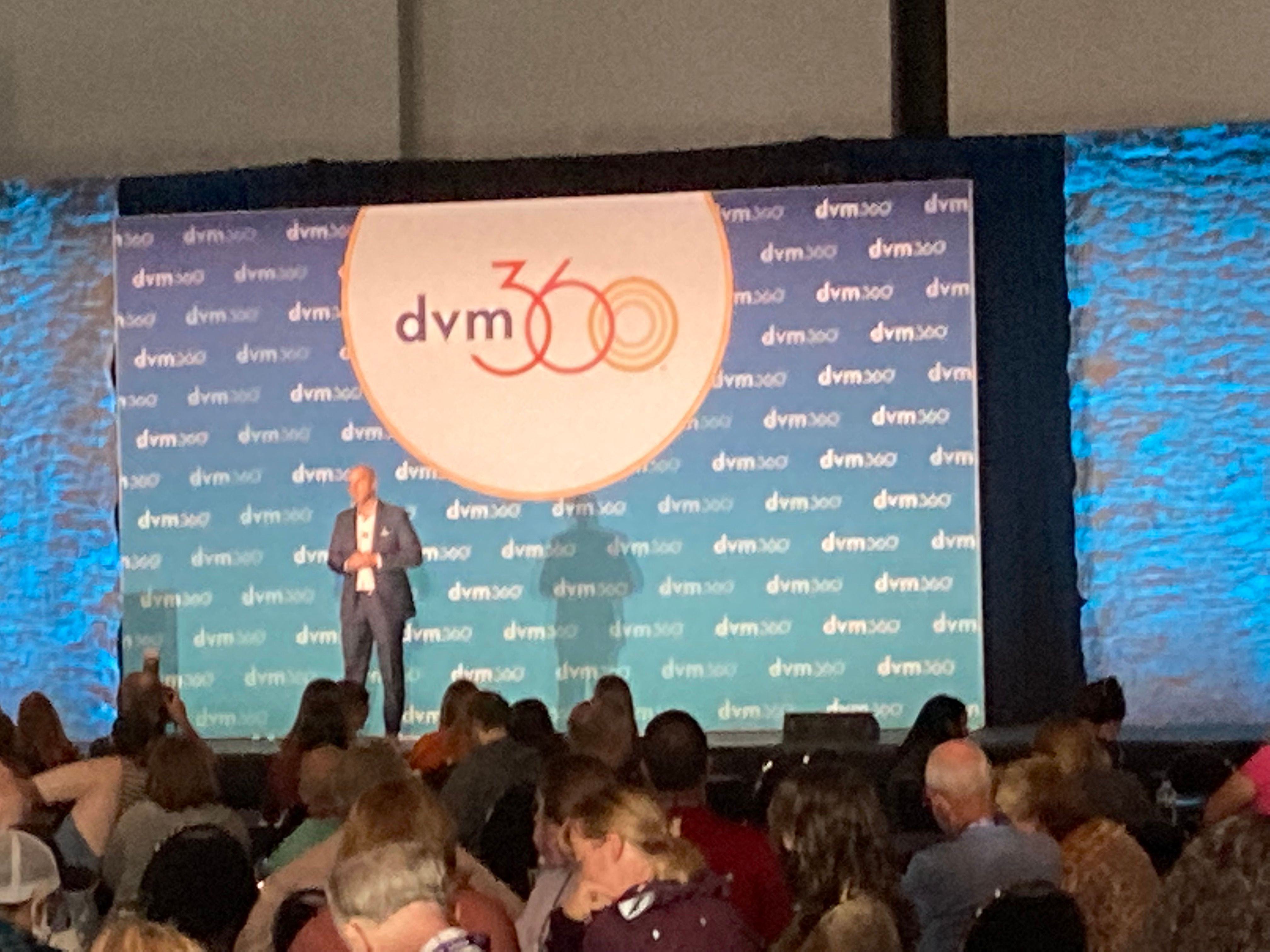The paradigm shift: A proactive approach to osteoarthritis treatment
Fetch dvm360® keynote speaker David Dycus, DVM, MS, CCRP, DACVS-SA encourages attendees to address joint pain early on.
Fetch keynote speaker David Dycus, DVM, MS, CCRP, DACVS-SA, offered insight on osteoarthritis treatment.

This article was updated Sunday, August 29, 2021.
Osteoarthritis (OA) is highly prevalent in the canine population and is the No. 1 source of chronic pain for dogs. During Saturday’s keynote address at Fetch dvm360® in Kansas City, Missouri, speaker David Dycus, DVM, MS, CCRP, DACVS-SA, urged attendees to take a more proactive approach for diagnosing OA in dogs of all ages.
Dycus is director and chief of orthopedic surgery at Nexus Veterinary Bone & Joint Center in Baltimore, Maryland; medical director of Nexus Veterinary Specialists in Baltimore; and cofounder and director of Veterinary Sports Medicine & Rehabilitation Institute, an online, subscription-based resource for animal health professionals. An accomplished lecturer, he has spoken to veterinary audiences across the country and around the world.
On Saturday, Dycus delivered a presentation to the Fetch audience that was peppered with personal anecdotes and visual elements that alternatively educated and provided humor to illustrate points—frequently eliciting laughter. At the session’s core, was discussion about OA as a major issue in veterinary medicine, and one that has an overall negative impact on patients with the condition.
“There is a whole slew of pathophysiological mechanisms that play a role and eventually result in breakdown, and ultimate failure, of the joint,” Dycus said. “It’s a very vicious cycle.”
According to Dycus, OA often results in decreased activity and food intake and can lead to euthanasia for dogs that are nonresponsive to treatment. In turn, inactivity leads to weight gain, joint stiffness, worsening cartilage damage, long-standing pain, and loss of range of motion. Inactivity can also interfere with the human-animal bond.
“It can cascade very quickly. It’s the snowball effect,” he said.
Range of motion is key and maintaining it is critical, Dycus said, because it is directly related to an animal’s limb function. Oftentimes, he said, animal health providers wait until more advanced onset of OA to begin treatment. However, he implored the audience to look more closely at joint problems in their earlier stages—and in younger dogs—in an effort to prolong range of motion.
“Why are we waiting until we’re behind the ‘eight ball’ to try to start covering ground,” he rhetorically asked. “What if we could change things, change the thought process a bit?”
That paradigm shift, he said, is taking a reactive approach and making it more proactive.
Dycus recommended a screening tool, the OA Checklist, from Zoetis that is designed to assess the condition of a dog’s joints. It focuses on whether a dog is limping after exercise, lagging behind on walks, is slow to rise, has difficulty jumping, has difficulty with stairs, or appears stiff.
Another recommended resource, Dycus said, is the Canine OsteoArthritis Staging Tool (COAST). This tool supports the proactive approach, and aids in stage-specific diagnosis and OA monitoring. Some benefits of COAST are regular evaluation of preclinical dogs and those affected by OA, facilitation of early detection of changes, which allows for timely intervention; improving understanding of the impact of OA on the dog, a consistent approach to evaluation, and allows for a multi-disciplinary care team and improved communication.
The COAST also provides a grading system that can help guide diagnosis and treatment. “We can follow up over time to see how these animals are doing,” Dycus said. “Above all else, why I love this form is for the detection of the dogs in the pre-clinical group.”
Dycus ended the keynote address by showing “In Silence”, a short video by Canine Arthritis Management in the United Kingdom that demonstrates the challenge of diagnosing a patient that can’t speak or indicate what ails them. The video pulled on some heartstrings and the audience took home a powerful message.